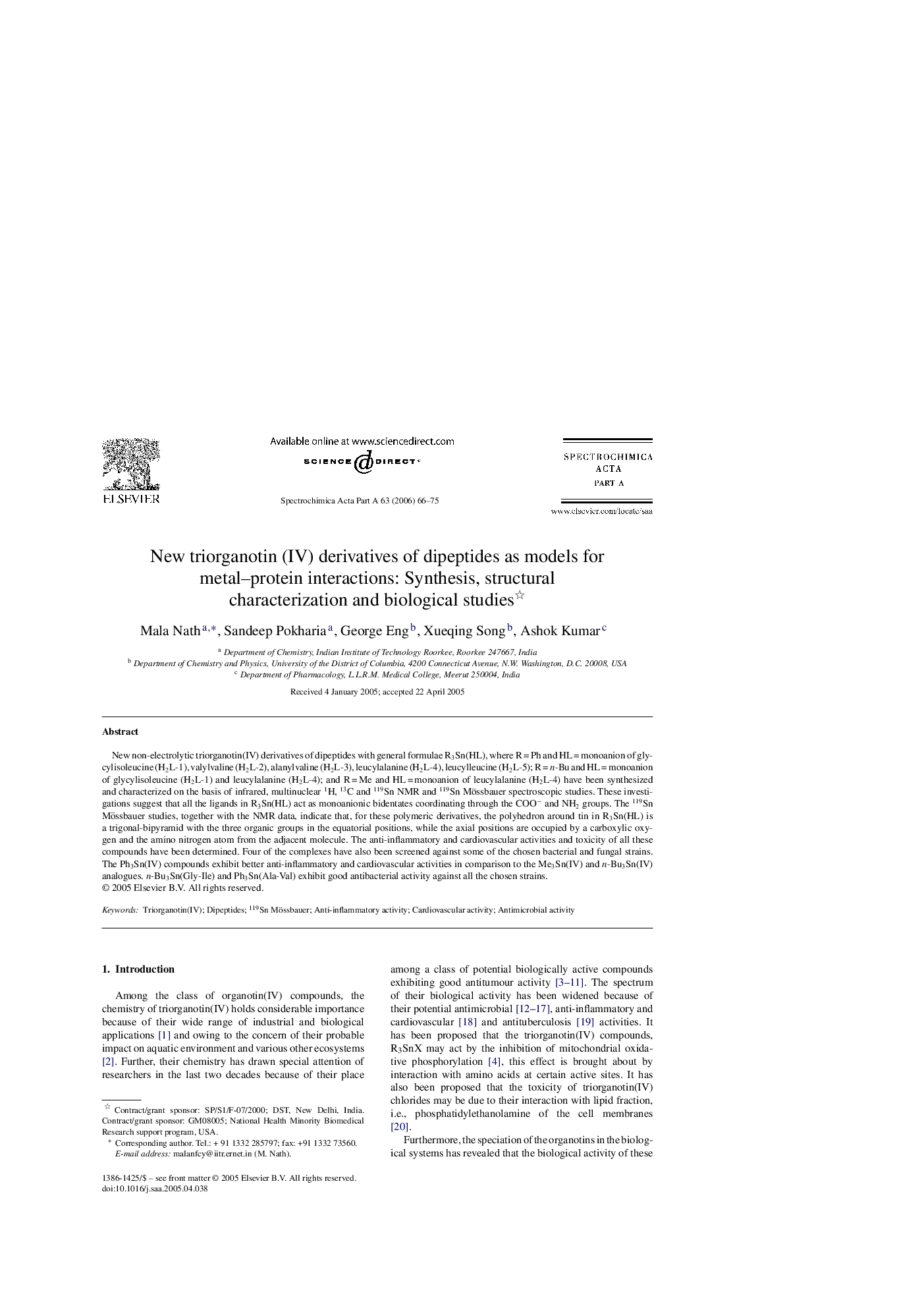| Article ID | Journal | Published Year | Pages | File Type |
|---|---|---|---|---|
| 1236893 | Spectrochimica Acta Part A: Molecular and Biomolecular Spectroscopy | 2006 | 10 Pages |
New non-electrolytic triorganotin(IV) derivatives of dipeptides with general formulae R3Sn(HL), where R = Ph and HL = monoanion of glycylisoleucine (H2L-1), valylvaline (H2L-2), alanylvaline (H2L-3), leucylalanine (H2L-4), leucylleucine (H2L-5); R = n-Bu and HL = monoanion of glycylisoleucine (H2L-1) and leucylalanine (H2L-4); and R = Me and HL = monoanion of leucylalanine (H2L-4) have been synthesized and characterized on the basis of infrared, multinuclear 1H, 13C and 119Sn NMR and 119Sn Mössbauer spectroscopic studies. These investigations suggest that all the ligands in R3Sn(HL) act as monoanionic bidentates coordinating through the COO− and NH2 groups. The 119Sn Mössbauer studies, together with the NMR data, indicate that, for these polymeric derivatives, the polyhedron around tin in R3Sn(HL) is a trigonal-bipyramid with the three organic groups in the equatorial positions, while the axial positions are occupied by a carboxylic oxygen and the amino nitrogen atom from the adjacent molecule. The anti-inflammatory and cardiovascular activities and toxicity of all these compounds have been determined. Four of the complexes have also been screened against some of the chosen bacterial and fungal strains. The Ph3Sn(IV) compounds exhibit better anti-inflammatory and cardiovascular activities in comparison to the Me3Sn(IV) and n-Bu3Sn(IV) analogues. n-Bu3Sn(Gly-Ile) and Ph3Sn(Ala-Val) exhibit good antibacterial activity against all the chosen strains.
